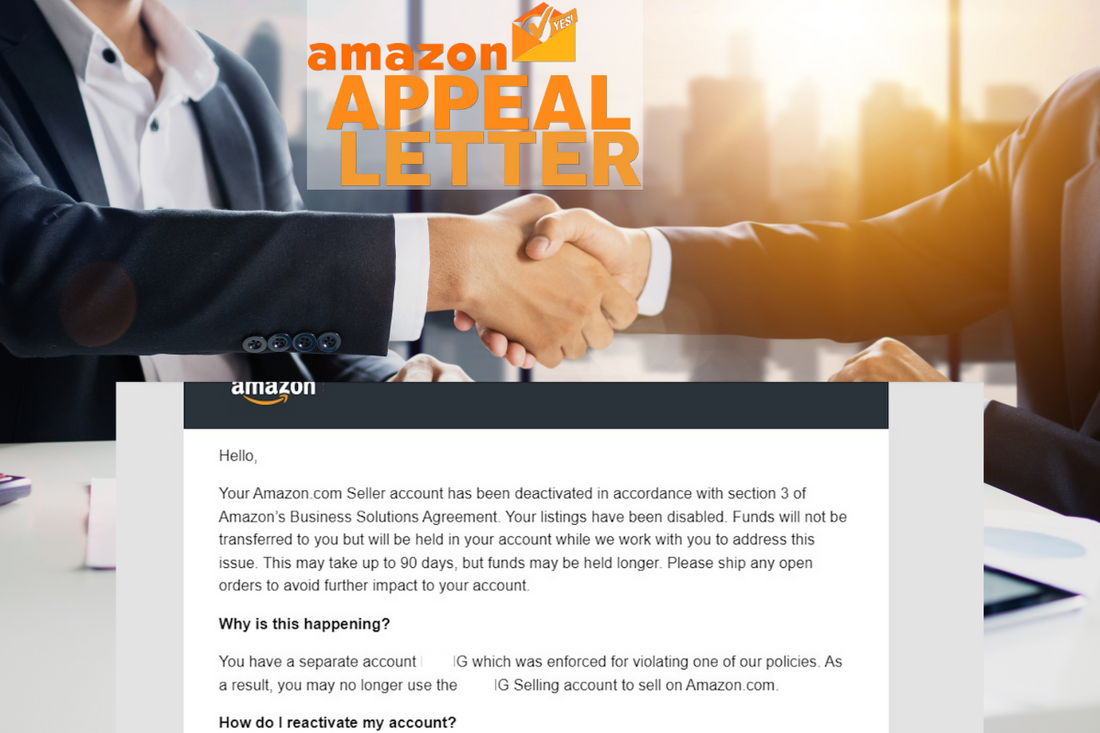Amazon Section 3 Violations:
How to Navigate Suspensions / Terminations.

Amazon is one of the largest e-commerce platforms in the world, offering sellers incredible opportunities to reach millions of customers. However, with these opportunities come strict policies, and violations of these policies can lead to account suspensions. One common suspension is due to a "Section 3" violation. If you’re an Amazon seller who has faced this issue, understanding what it means and how to appeal can help you reinstate your account.
What Is a Section 3 Violation?

Section 3 of Amazon’s Business Solutions Agreement pertains to Prohibited Seller Activities and Actions. Amazon holds sellers to high standards, ensuring the platform remains fair and trustworthy for buyers. A Section 3 violation often relates to activities like:
-
-
Violating Pricing Policies: Engaging in price gouging or setting unreasonably high prices during times of high demand.
-
Infringing Intellectual Property: Selling products that violate copyright, trademark, or patent laws without proper authorization.
-
Providing False Invoices or Documents: Submitting fabricated or altered documents during verification or appeals processes.
-
Account Linking via Shared Information: Operating or being linked to another account through shared IP addresses, payment methods, or contact details.
-
Drop Shipping Violations: Failing to comply with Amazon’s drop shipping policy, such as shipping items with third-party branding or failing to accept returns.
-
Sales Rank Manipulation: Using bots, fake orders, or other methods to artificially inflate sales rank.
-
Improper Use of Listings: Using unrelated keywords, creating duplicate listings, or misclassifying items to gain visibility.
- Inventory Mismanagement: Selling out-of-stock items or consistently failing to meet delivery expectations.
-
Violating Pricing Policies: Engaging in price gouging or setting unreasonably high prices during times of high demand.
When Amazon detects any of these activities, it can suspend your account, leaving you without access to your funds and ability to sell.
Why Does Amazon Call Out the BSA in Amazon Section 3 Violation Notices?

If your Amazon seller account has been suspended, you’ve likely received a notice that feels formal and severe compared to typical Amazon communications. These notices explicitly reference Section 3 of the Business Solutions Agreement (BSA).
Amazon highlights its Business Solutions Agreement in these notices to reduce the likelihood of legal disputes or arbitration. By pointing to the exact terms sellers violated, Amazon establishes a clear basis for its actions, which can discourage sellers from pursuing litigation. Additionally, these formal notices may dissuade sellers from appealing their account suspensions, streamlining the process for Amazon and minimizing risk.
Steps to Take After a Section 3 Suspension
If you receive a notice about a Section 3 violation, don’t panic. Here’s how to approach the situation:
1. Understand the Reason for Suspension
Carefully read the suspension notification from Amazon. Look for specific details about the violation. If the message is vague, review your recent activities to identify potential issues.
2. Gather Evidence
Compile all relevant information about your account and activities. This could include invoices, correspondence with buyers, or proof of product authenticity. If you’ve been accused of operating multiple accounts, document any justification, such as separate businesses requiring different accounts.
3. Draft a Plan of Action (POA)
A well-structured POA is essential for appealing a suspension.
Your POA should include:
-
Root Cause Analysis: Clearly explain what caused the violation (e.g., an unintentional policy breach).
-
Steps Taken to Address the Issue: Highlight immediate actions, such as removing problematic listings or correcting inaccurate product descriptions.
-
Preventative Measures: Detail how you’ll prevent future violations (e.g., implementing stricter quality control or adhering to Amazon’s communication policies).
4. Submit Your Appeal

Log into your Seller Central account and navigate to the "Performance Notifications" section. Use the "Appeal" button to submit your POA and supporting documents. Ensure your tone is professional, concise, and solution-focused.
5. Be Patient but Proactive
Amazon’s response time varies, but following up on your appeal can demonstrate your commitment to resolving the issue. Avoid submitting multiple appeals unless requested.
Common Mistakes to Avoid
-
Being Defensive: Blaming Amazon or denying responsibility won’t help your case.
-
Submitting Incomplete Appeals: Missing documents or vague POAs can delay resolution.
-
Ignoring Amazon’s Guidelines: Ensure your appeal aligns with Amazon’s policies and instructions.
Seeking Professional Assistance
Navigating a Section 3 suspension can be challenging, especially if you’re unsure about the specifics of your violation. At Amazon Appeal Letter LLC, we specialize in helping sellers craft effective appeal letters and regain account access quickly. With our experience, we can:
-
Conduct a thorough account review.
-
Identify the root cause of your suspension.
-
Draft a customized POA tailored to Amazon’s requirements.
Conclusion
A Section 3 violation can feel overwhelming, but with the right approach, you can resolve the issue and get back to selling. By understanding the policies, crafting a detailed POA, and taking preventative measures, you’ll improve your chances of a successful appeal. For personalized support, visit us at AmazonAppealLetter.com to take the first step toward reinstating your account.

